Update: 30 December 2018
Today I’m going to extend my previous post on ‘Basics of 3D Modeling and Printing’ and by using those techniques I will briefly discuss the designing and development various parts of the Humanoid Skull(Head) in CAD Software(Cinema 4D). Thereby, showcase the real-life 3D printed Head as the whole and its Articulated jaw working by employing Manav AI at its backend. So, Let’s begin.
Random Thoughts and Roadmap:
If you ever have done research on any subject/topic, you surely have asked yourself this question:
Is it better to develop everything from scratch, or use a existing framework/source?
Over the years of experience, I concluded that compared to developing something from scratch, adapting an open framework/design(wherever possible) makes more sense to me. I would definitely adapt well-established frameworks to handle most of the hard work that needs to be done, as long as it speeds up my project’s development. Here are some points that to add to my conclusion:
- Adaption saves Time: Time is always an issue. Even if your project has no deadline, other developers are constantly creating new techniques, new languages, new hardware and a lot of other new technology that would probably make your work obsolete.
- Keeping up with the latest developments: Suppose, you just built everything you need from scratch. But it is most likely that someone else can look at your project and use more modern techniques and additional frameworks to build a better solution in less time. And that’s the biggest advantage of using frameworks!
- Adaption minimizes Mistakes: If I invented a framework, that will be tested just by just me or a bunch of people only. Fortunately, I’m very good but even I make flaws. The use of open frameworks has a better advantage since it will be well tested by the community, and thereby guaranteeing its quality Or lack thereof, but we will know them in advance.
- Adaption minimizes Cost: Since a lot of developers have to be in advance, It will require more money for Research and Developing it from scratch, On the other hand employing existing open-framework will save money undoubtedly.
Therefore, I decided to adopt an open-sourced Humanoid 3D design InMoov Humanoid developed by Gaël Langevin and planned to further develop/innovate its parts according to my Humanoid needs. It gave me idea and direction, which tends to make my job of designing humanoid quite faster.
Modeling the Skull and Articulated Jaw:
Human Skull:
The human skull is the bony structure that forms the head in the human skeleton. It supports the structures of the face and forms a cavity for the brain. Like the skulls of other vertebrates, it protects the brain from injury.
 Human Skull
Human Skull
The skull consists of two parts, of different embryological origin—the neurocranium and the facial skeleton (also called the membraneous viscerocranium). The neurocranium (or braincase) forms the protective cranial cavity that surrounds and houses the brain and brainstem. The upper areas of the cranial bones form the calvaria (skullcap). The membranous viscerocranium includes the mandible. The facial skeleton is formed by the bones supporting the face.
Jaw(mandible):
Jaw, either of a pair of bones that form the framework of the mouth of vertebrate animals, usually containing teeth and including a movable lower jaw (mandible) and fixed upper jaw (maxilla). Jaws function by moving in opposition to each other and are used for biting, chewing, and the handling of food.
 Human Jaw(mandible)
Human Jaw(mandible)
The mandible consists of a horizontal arch, which holds the teeth and contains blood vessels and nerves. Two vertical portions (rami) form movable hinge joints on either side of the head, articulating with the glenoid cavity of the temporal bone of the skull.
Modeling:
The head design is quite self-explanatory and straight forward. Here are some noteworthy points(Cinema 4D rendered outputs):
 Humanoid skull middle Split View
Humanoid skull middle Split View
-
My AEAM design was created by keeping in mind the dimension of the Humanoid Skull(adapted from InMoov), such that it fits in perfectly, therefore I readjusted the dimensions and rescaled the parts.
 Advanced Eyes Articulate Mechanism with Eyelids
Advanced Eyes Articulate Mechanism with Eyelids -
The eyelids are kept same colored as Humanoid face skin to make them blend right in.
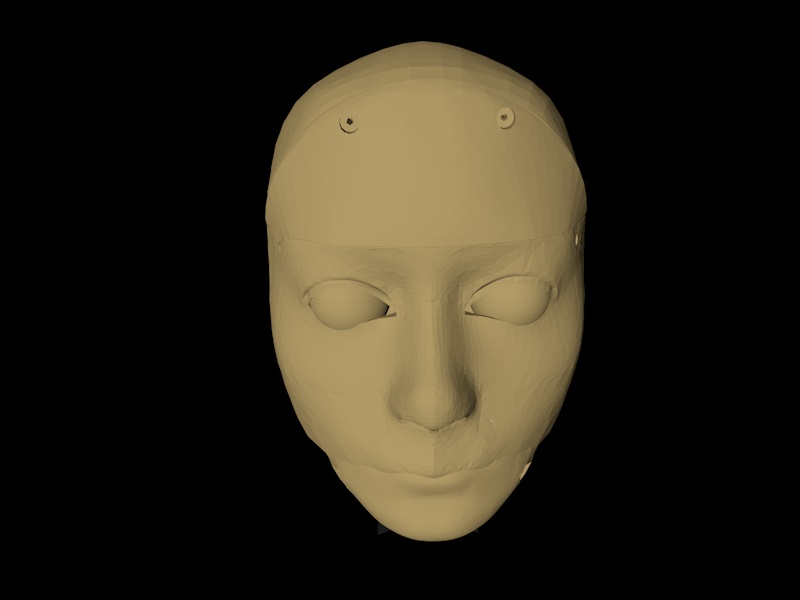 Humanoid face Front-View
Humanoid face Front-View -
AEAM was designed such that it distant at few millimeters away from the cutout of eyes in the face covering white the eyeballs beneath them.
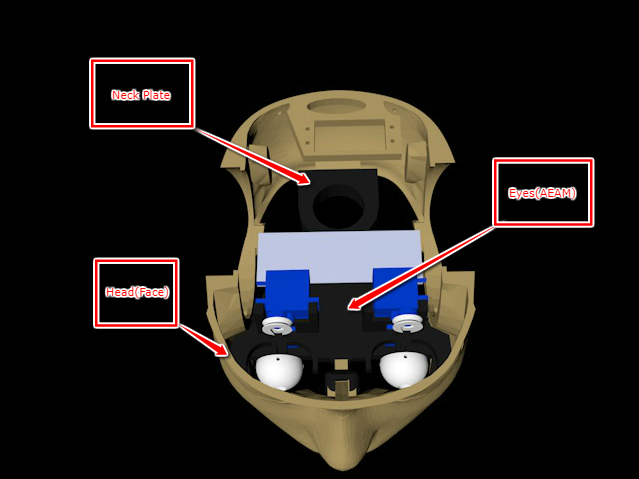 Humanoid skull section Top-View
Humanoid skull section Top-View -
The modified Neckplate slides in perfectly with face afterward. The neck joint has a flexible design with DOF of -/+ 30 degrees vertically and 150 degrees in rotation. More detailed information will be provided in upcoming posts.
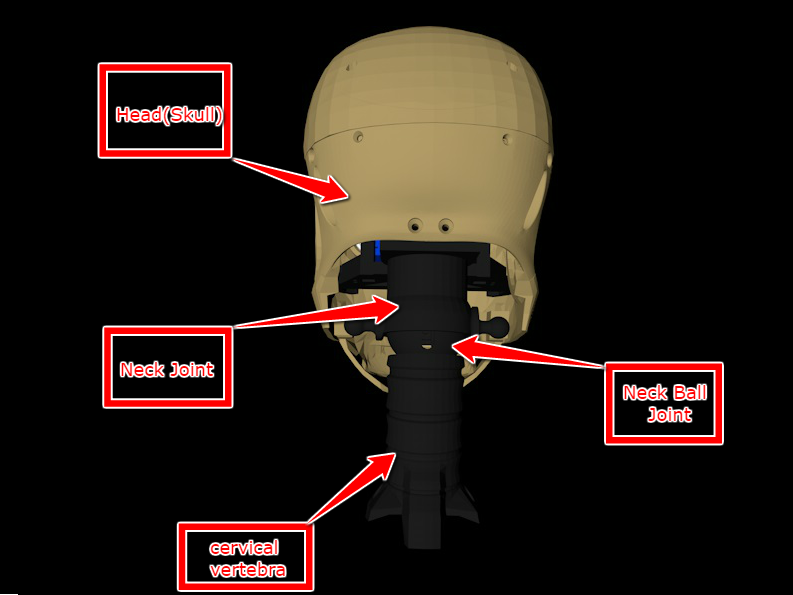 Articulated Humanoid Neck joint Back-View
Articulated Humanoid Neck joint Back-View -
The Humanoid skull’s top is divided into 4 parts to make it easier to print, thereby can be joined by screws.
 Humanoid upper skull Top-View
Humanoid upper skull Top-View -
Movable jaw(Servo Controlled) is designed to mimic the movement of the human mouth.
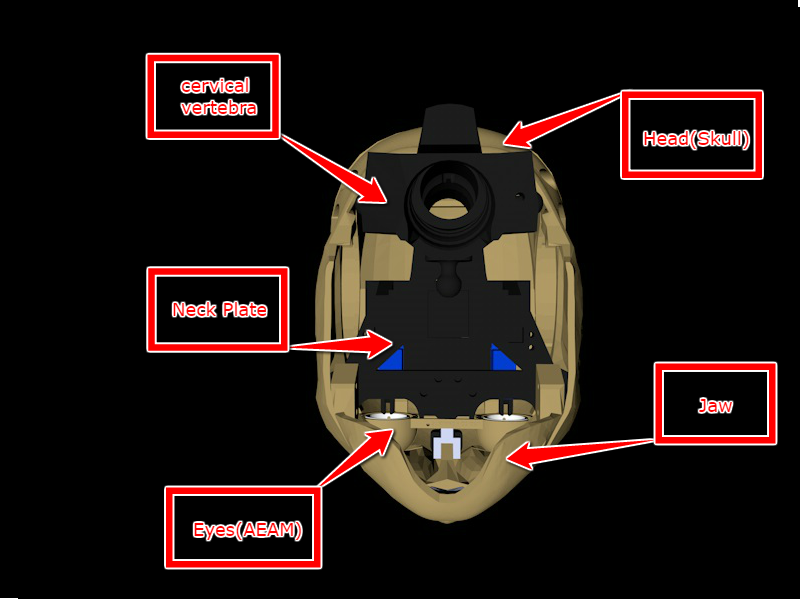 Humanoid Articulated Jaw(mandible) Bottom-View
Humanoid Articulated Jaw(mandible) Bottom-View
Printing:
The Skull is then 3D printed to recreate it Life-sized. I used PLA and ABS filament for printing most of my parts on my Creality 10S. I printed out Head parts with the following settings:
- 270micron layer height
- 3 perimeters
- 1.5mm tops and bottoms
- 15~30% infill
- no brim
The resultant Humanoid Skull 3D printed part looks:
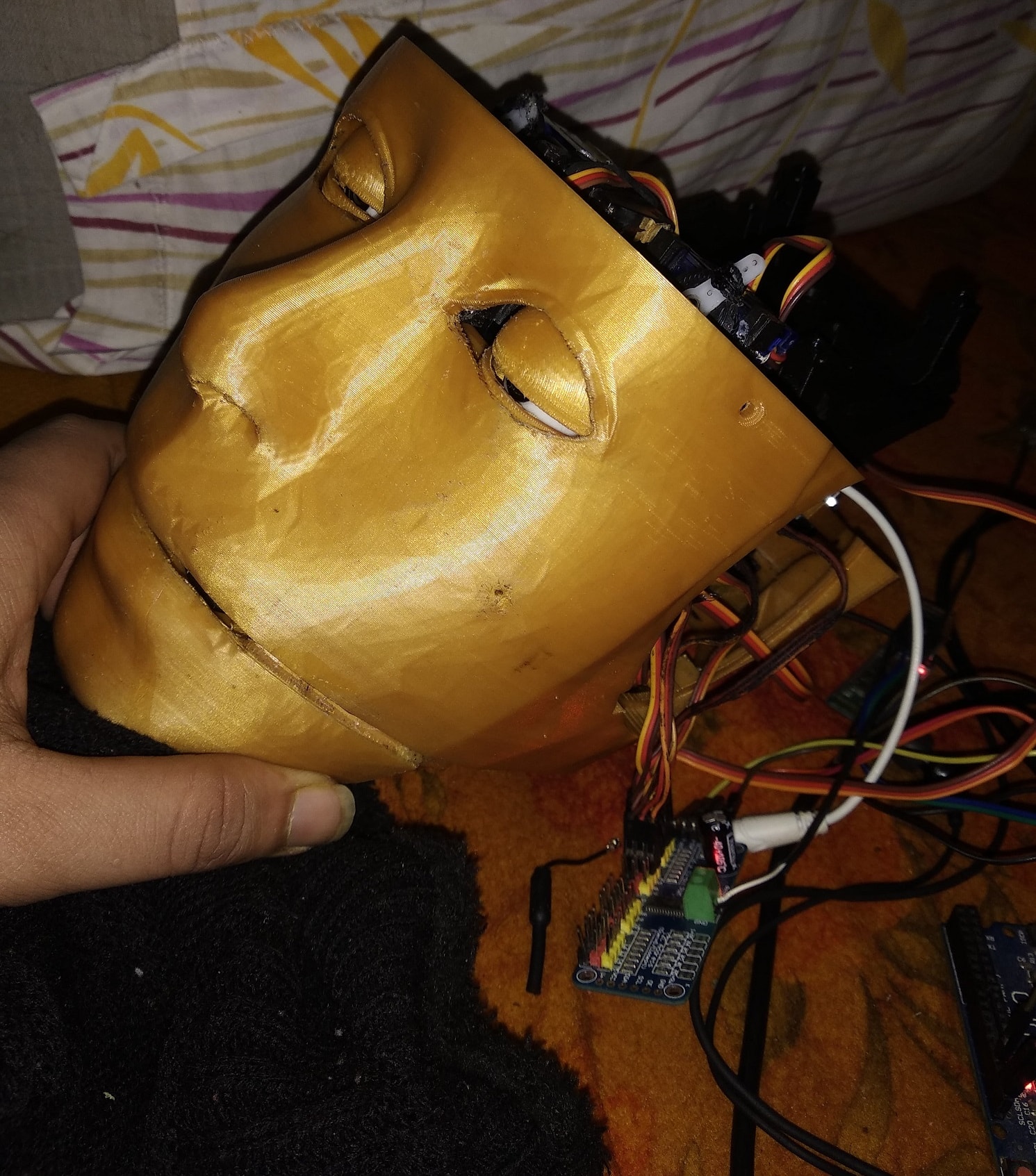 3D printed Humanoid Head with Articulated Jaw
3D printed Humanoid Head with Articulated Jaw
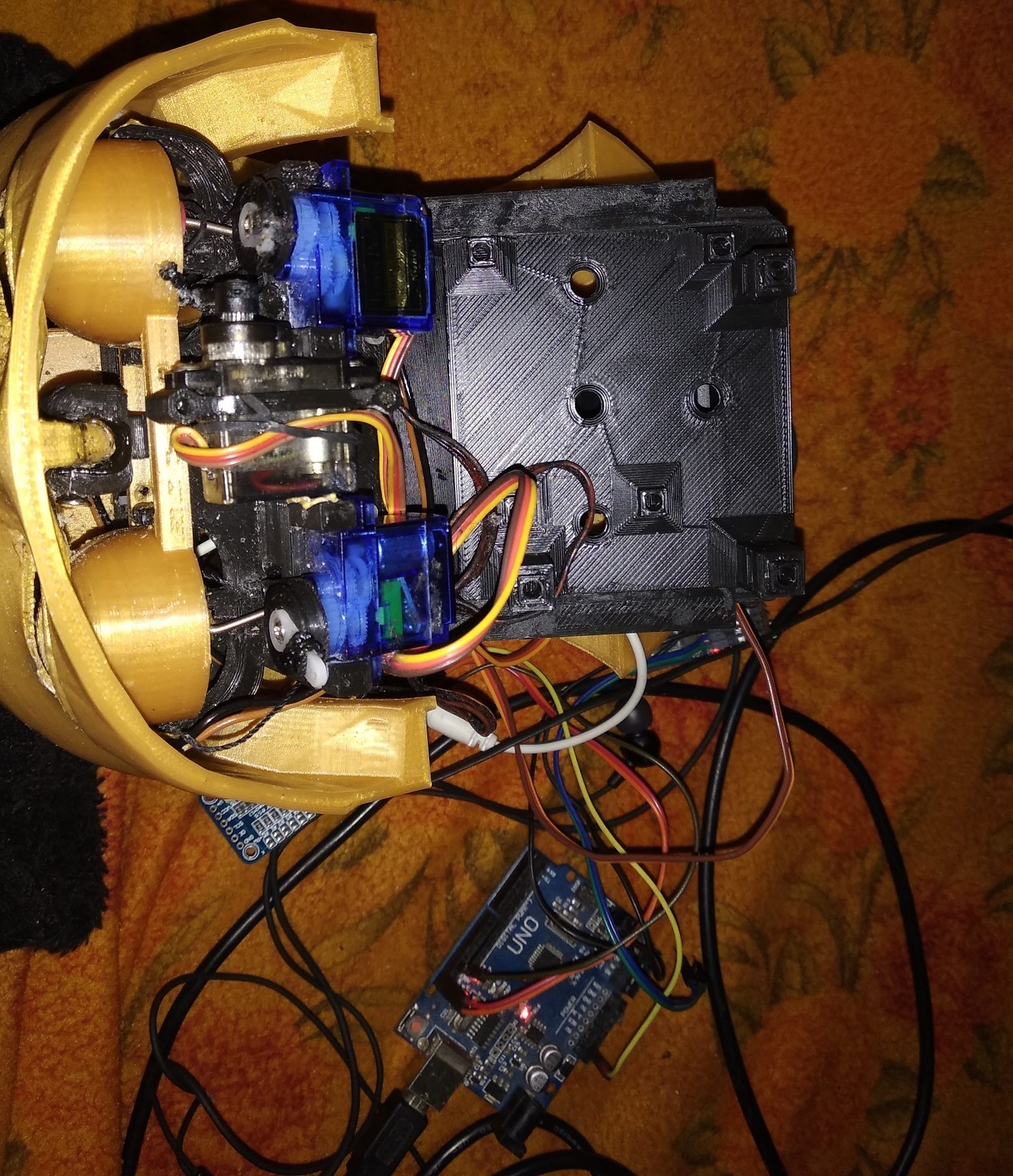 3D printed Humanoid Head with AEAM
3D printed Humanoid Head with AEAM
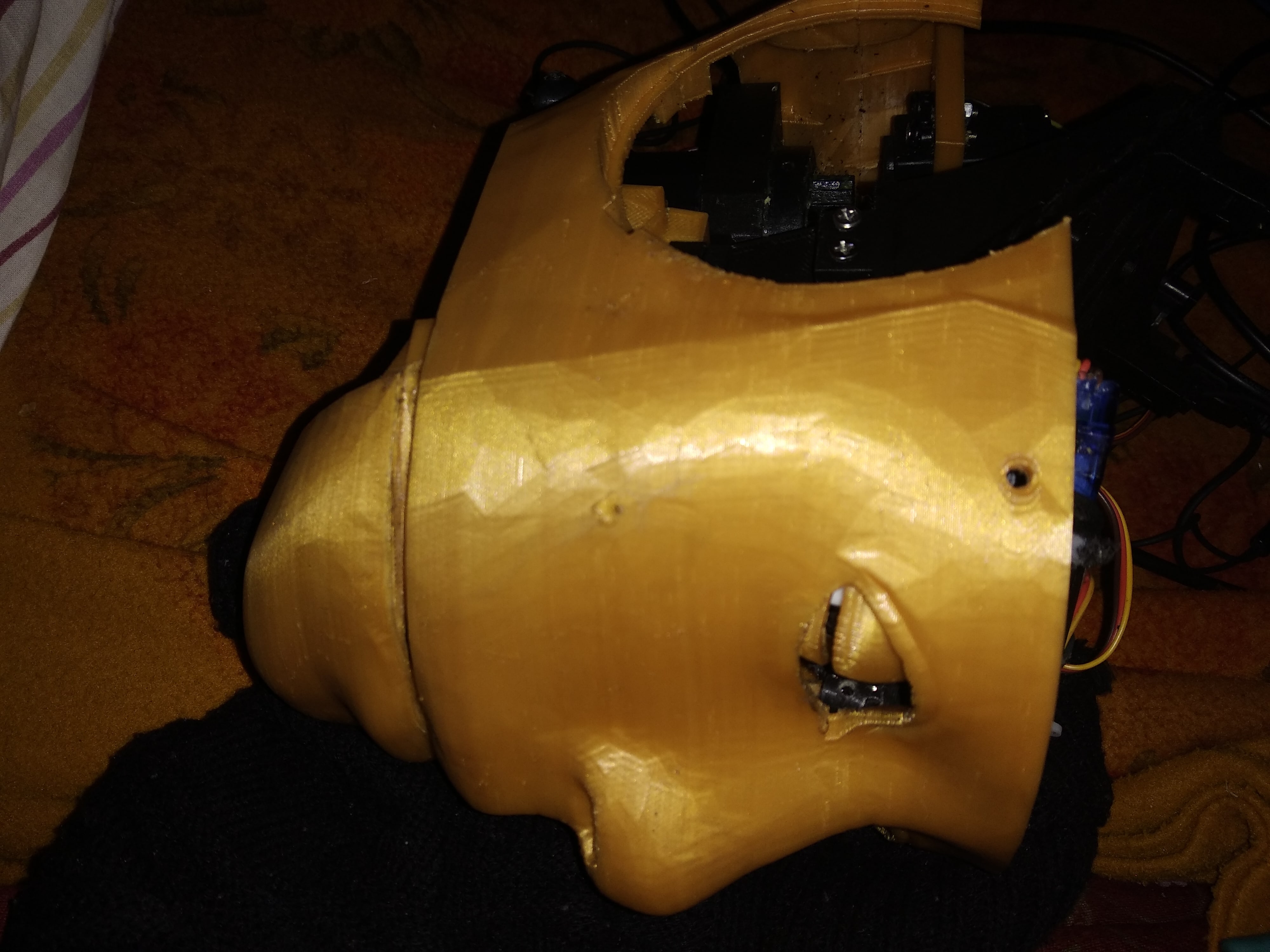 3D printed Humanoid Skull side-view
3D printed Humanoid Skull side-view
Even my Redmi Smartphone’s Camera AI recognize Humanoid 3D printed face as a real Human face:
 3D printed face recognized as a real Human face
3D printed face recognized as a real Human face
Testing jaw movement:
The following video showcases the physical Interaction of Manav AI(speech synthesis capabilities) with the user through its Humanoid jaw motion in real-time:
Manav AI acts at the different level of the Humanoid and could easily directly or indirectly influences various internal(modules/programs) as well as external functions(Arduinos/Sensors etc.) of the Humanoid. More information can be found here.
Conclusion:
Through this post, I summarized the development of Articulated Humanoid Head with neck using 3D printing technology and then showcased its Articulated jawworking in-coordination with Manav AI at its backend. The output isn’t perfect yet and still in Experimental State. The upcoming future posts will try to overcome some related problems and will implement similar Articulated mechanisms in other Humanoid body parts.
Hey there, Hope you enjoy reading this article. If so, Share it with your family & friends! So Stay Tuned and Stay Creative ;)